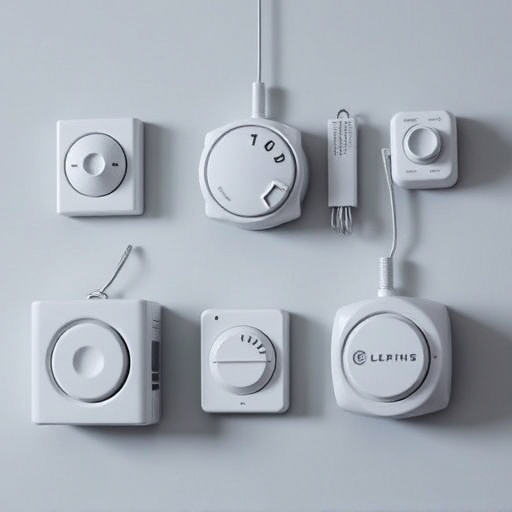Emergency phone alerts with Personal Safety Siren technology offer a vital tool for personal safety by sharing precise locations and deterring threats. Modern devices prioritize battery life through advanced power management, ensuring alert reliability during crises. Simple yet effective features like GPS tracking, automated calls, and customizable messages enhance response times, especially for solo travelers or remote areas. Future developments include AI analysis and enhanced encryption to further protect users' privacy and build safer communities.
In today’s digital age, emergency phone alerts with location sharing have emerged as a powerful tool for personal safety. Understanding these alerts and their underlying technology, such as real-time location tracking, is crucial in enhancing our ability to respond to critical situations swiftly. This article delves into the various facets of this lifesaving mechanism, exploring its benefits, technical considerations like battery life, user experience, and future prospects, with a focus on boosting personal safety measures.
- Understanding Emergency Phone Alerts: A Lifesaving Tool
- The Role of Location Sharing in Personal Safety
- Technical Aspects: Battery Life and Efficiency
- User Experience: Ease of Use and Features
- Implementation and Future Prospects: Enhancing Safety Measures
Understanding Emergency Phone Alerts: A Lifesaving Tool
Emergency phone alerts with location sharing are a powerful tool for personal safety, providing users with a quick and efficient way to notify authorities in case of distress. These alerts work as a Personal Safety Siren, emitting an urgent signal that triggers immediate action from emergency services. The key feature is its ability to share precise locations, ensuring rescuers can pinpoint the exact spot where help is needed.
This technology relies on robust battery life to function when it matters most. Modern devices are designed with long-lasting batteries that can sustain alerts and location tracking for extended periods, offering peace of mind and ensuring users are prepared in unexpected emergencies.
The Role of Location Sharing in Personal Safety
Location sharing is a powerful tool that significantly enhances personal safety, especially in emergencies. By enabling this feature on your smartphone, you allow emergency services to access your precise location, ensuring faster response times during critical situations. This technology is particularly vital for individuals who frequently travel alone or those living in remote areas where quick identification of their position can be life-saving.
The integration of location sharing into emergency phone alerts provides a safety net, offering peace of mind and potentially saving lives. With advancements in mobile technology, the accuracy and reliability of location data have improved, addressing previous concerns about battery life and privacy. Modern systems are designed to minimize power consumption, ensuring that your phone’s battery remains functional for essential calls and alerts while keeping your location data secure and only shared with authorized personnel during emergencies.
Technical Aspects: Battery Life and Efficiency
Emergency phone alerts with location sharing, powered by a Personal Safety Siren, come with unique technical considerations, particularly regarding battery life and efficiency. These applications often rely on constant connectivity to transmit critical data swiftly, which can be energy-intensive. To mitigate this challenge, modern solutions employ sophisticated power management strategies that optimize battery usage without compromising the reliability of alerts. By implementing efficient algorithms and hardware advancements, such as low-power communication protocols, manufacturers ensure users’ safety without sacrificing phone battery life during critical situations.
Moreover, features like automatic location sharing during an emergency call can further drain a device’s battery. Addressing this issue, developers have incorporated smart power conservation modes that deactivate non-essential functions temporarily to preserve battery life, ensuring the Personal Safety Siren remains operational when every second counts.
User Experience: Ease of Use and Features
The user experience of emergency phone alerts with location sharing is designed around simplicity and effectiveness, ensuring even those less tech-savvy can access critical features in stressful situations. These apps typically offer intuitive interfaces, requiring just a few taps to activate an alert and share your location with emergency services. Key features like the Personal Safety Siren provide a loud, attention-grabbing signal to deter potential threats, while battery life is optimized to last during emergencies, ensuring users have time to reach safety.
Location sharing technology, often powered by GPS, pinpoints a user’s exact position, providing emergency responders with precise coordinates. Additional features may include automated call connections, pre-set contact lists for rapid notification, and customizable alert messages allowing users to convey their situation. The combination of ease of use and powerful functionality makes these tools invaluable assets for personal safety in an increasingly digital world.
Implementation and Future Prospects: Enhancing Safety Measures
The implementation of emergency phone alerts with location sharing is a significant step forward in enhancing personal safety. This technology leverages advanced features like GPS tracking and real-time data to enable swift response during critical situations. When activated, an alert not only notifies emergency services about an individual’s location but also provides vital battery life, ensuring the system remains operational until help arrives.
Looking ahead, the future prospects of this technology are promising. As advancements in connectivity and battery technology continue, we can expect even more robust and efficient systems. Integrating AI for predictive analysis could further enhance safety measures by anticipating potential hazards based on user behavior patterns. Moreover, improved encryption standards will address privacy concerns, fostering wider adoption and ultimately making our communities safer.
Emergency phone alerts with location sharing are a powerful tool for enhancing personal safety, offering peace of mind in an instant. By combining the convenience of mobile technology with critical life-saving information, these alerts have the potential to revolutionize how we navigate and protect ourselves in emergencies. As we move forward, focusing on improving battery life and refining user experiences will be key to ensuring these features become integral to our safety measures, turning every smartphone into a personal safety siren ready for action at a moment’s notice.
